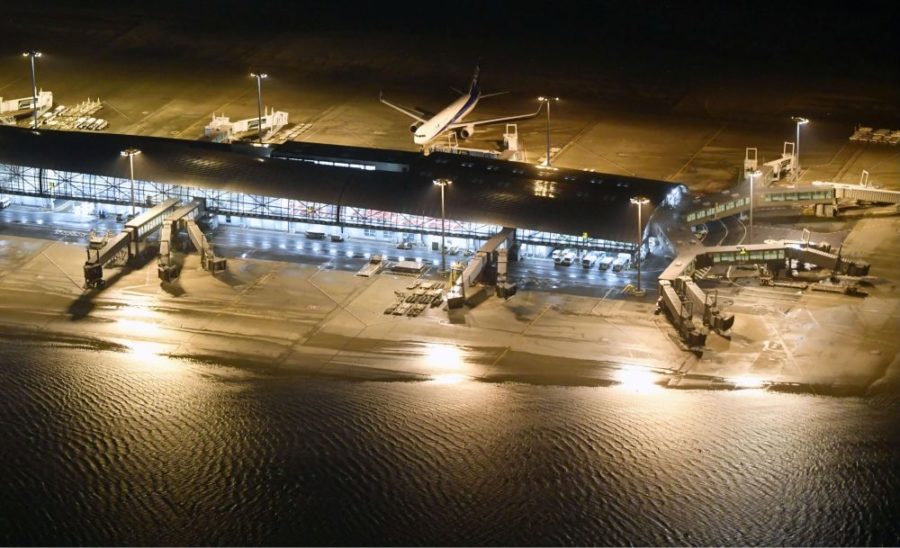The Destructive Aftermath of Typhoon Jebi
An aerial view shows a flooded runway at Kansai airport, which is built on a man-made island in a bay, after Typhoon Jebi hit the area, in Izumisano, western Japan, in this photo taken by Kyodo September 4, 2018. Mandatory credit Kyodo/via REUTERS ATTENTION EDITORS – THIS IMAGE WAS PROVIDED BY A THIRD PARTY. MANDATORY CREDIT. JAPAN OUT. NO COMMERCIAL OR EDITORIAL SALES IN JAPAN.
September 7, 2018
 Picture by Kyodo via Reuters
Picture by Kyodo via Reuters
A deadly typhoon had struck Japan on Tuesday afternoon leaving a significant amount of damage. The recorded typhoon, “typhoon Jebi” is reported to be the most powerful storm in the past twenty five years according to Japanese sources. The storm has caused severe rain and strong gusts of wind leaving destruction to the small country. A total of Four hundred and seventy injuries and eleven casualties have been reported.
In 1993 a similar typhoon had struck Japan leaving major damage. Wind speeds were so intense causing buildings to sway from side to side, those wind speeds rose as high as 100 miles per hour. This storm has inspired a variety of different emotions to all involved.
Due to the deadly high wind rates, Japan made a decision to cancel all flights and close down all airports. This Ensuring that everyone remained safe and providing protection to everyone inside and away from the flooding outside. This overpowering storm had caused so much destruction due to its intensity.
Typhoon Jebi had overturned vehicles, ripped off roofs, tore down older buildings and left a major amount of water. This leaving all areas in Western Japan to be surrounded in nothing but rising water and flooding.


